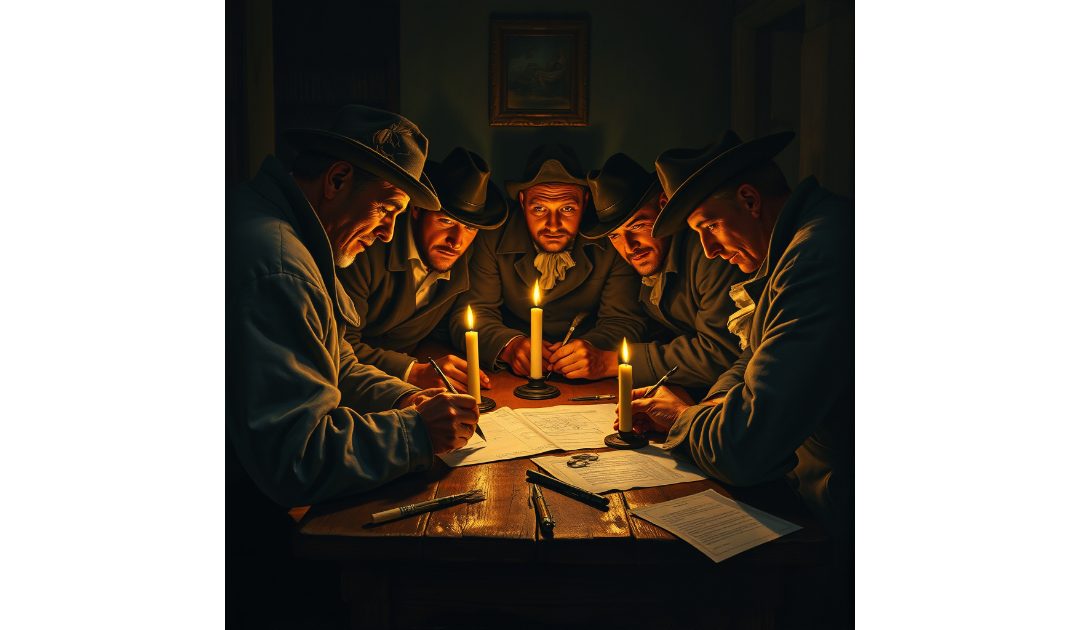On the 1st of May, 1820, the Cato Street Conspirators were executed. In the rich tapestry of British history, the Cato Street Conspiracy is a dramatic episode that offers a vivid glimpse into the turbulent times of the early 19th century. Overshadowed by other historical events, this plot against the British government in 1820 reveals the period’s political unrest, economic hardship, and the enduring struggle for reform.
The Napoleonic Wars had just ended, leaving Britain grappling with economic depression, high unemployment, and widespread dissatisfaction among the working classes. The post-war period was marked by civil unrest, with movements like the Luddite riots and the Peterloo Massacre in 1819, which had left a bloody stain on the nation’s conscience. It was in this volatile atmosphere that a group of radical reformers, led by Arthur Thistlewood, hatched a daring plan to overthrow the government.
Arthur Thistlewood was an ardent revolutionary, inspired by the French Revolution’s radical ideas. Born in Lincolnshire in 1770, he had served in the British Army before becoming deeply involved in radical politics. Thistlewood and his fellow conspirators were motivated by a vision of a more equitable society, one where the power structures of aristocracy and privilege were dismantled in favour of a government that truly represented the people.
The conspiracy took its name from Cato Street, a small alley in Marylebone, London, where the group plotted their insurrection. Their plan was audacious: they intended to assassinate the entire British Cabinet during a dinner at Lord Harrowby’s home in Grosvenor Square and then incite a widespread uprising among the disenfranchised working class. They hoped that this would lead to the establishment of a provisional government and, ultimately, a more democratic society.
On the 23rd of February, 1820, the plotters gathered in a loft above a stable in Cato Street, armed with swords, pistols, and homemade grenades. However, unbeknownst to them, George Edwards, a government informant, had infiltrated their ranks and had been providing intelligence to the authorities. The government was aware of the conspiracy’s every detail.
As the conspirators prepared to set their deadly plan in motion, they were ambushed by a detachment of Bow Street Runners, an early form of the police, and soldiers. In the ensuing chaos, one of the Bow Street officers, Richard Smithers, was killed by Thistlewood. The plot quickly unravelled, with some conspirators captured on the spot while others, including Thistlewood, managed to escape.
The government wasted no time in pursuing the fugitives. Within days, all the conspirators were apprehended, and a sensational trial followed. The trial of Thistlewood and his associates captivated the public, with accounts of their revolutionary fervour and the dramatic details of the failed plot filling the press. Ultimately, five conspirators, including Thistlewood, were found guilty of high treason and sentenced to death. They were hanged and decapitated on the 1st of May 1820, their execution serving as a grim warning to others who might consider challenging the status quo.
The Cato Street Conspiracy had a profound impact on the British political landscape. While the plot itself failed to ignite the widespread revolt its planners had hoped for, it highlighted the deep-seated discontent and the lengths to which some were willing to go to achieve political reform. Moreover, it underscored the government’s vigilance and determination to maintain order during a time of significant social upheaval.
In a broader context, the conspiracy is an important reminder of the struggle for reform and the eventual progress towards a more inclusive political system in Britain. The harsh measures taken against the conspirators sparked further debate about the need for change, influencing subsequent reform movements and legislation. In this light, the Cato Street Conspiracy can be seen as a precursor to the more successful push for reform that would occur later in the 19th century, culminating in the Reform Acts, which gradually expanded the electorate and increased representation for the working classes.

